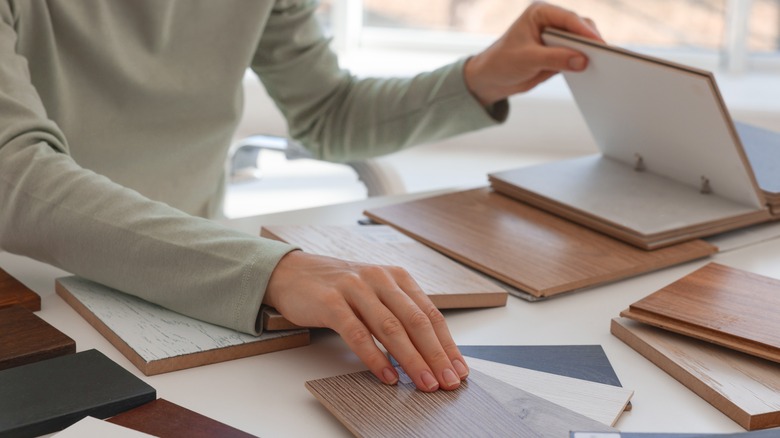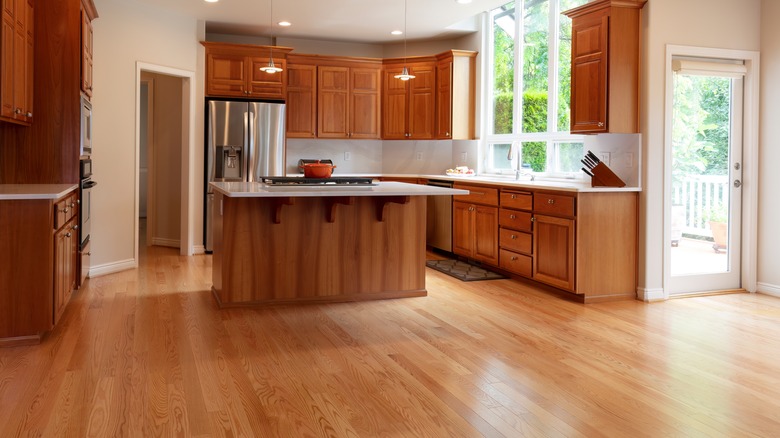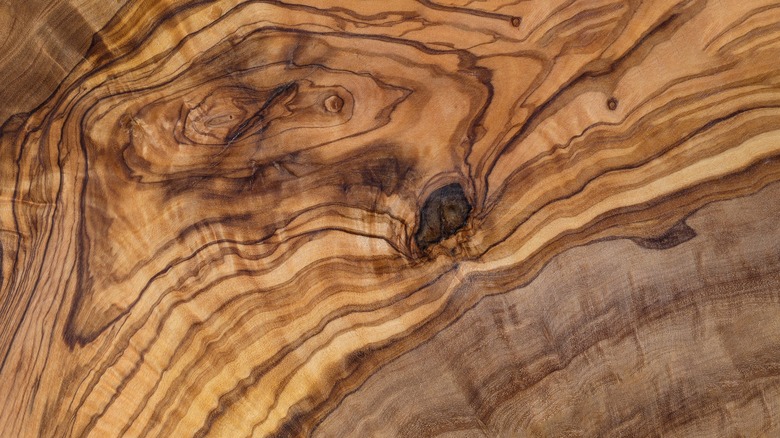Olive Wood Vs Oak Wood: Which Flooring Material Is Better For Your Home?
You've decided that hardwood floors are the right choice for you, and you've narrowed your choice of wood species down to two that begin with "O": oak wood or olive wood. Which one is better for you and your home? The answer, as for many things in life, is "it depends." In this case, it depends on factors like appearance, price point, and availability, to name a few. While the popular oak is generally well-priced and readily available, the rarer, more expensive olive wood has some unique attractive qualities.
There are a couple of things you need to know first, no matter which choice you make. With either oak or olive, your hardwood floor cleaning routine will be pretty much the same: regular dusting, ideally with a microfiber cloth. If you choose to sweep, you'll need to use a soft-bristled broom while following the grain, and if you choose to vacuum, you'll need to employ the hard floor setting. You'll want to limit the amount of water you use on a hardwood floor. Also be aware of the Janka rating, a standard used by the American Society for Testing and Materials (ASTM) to measure the hardness of wood. Simply put: the higher the number, the harder the wood. Since floors literally get stomped on, you want them made from a wood that's pretty darn hard, preferably 1,000 or higher on the Janka scale.
Affordable oak gives you options
Oak wood, whether red or white, is one of the most popular choices for hardwood flooring. Floor installer Maria Ramos says that "At least 70% of the floors we put in are oak," per Good Housekeeping. Red oak has a warmer, redder coloring and a more swirling pattern, while white oak tends to be more of a pale brown with hints of other colors and has a more subtle pattern. Both can accept wood stains, but lighter-colored stains will do better on white oak. With the option to stain, plus the choice of white or red oak, this wood gives you a variety of options for the appearance of your flooring.
When it comes to the hardness of the wood, white oak is just a bit harder than red oak, with a Janka scale rating of 1,350 for white oak compared to 1,220 for red oak. Either are plenty hard enough for use on your floor. Other things to know are that white oak in particular is resistant to rot and mildew, and its tighter grain means that it has pretty good moisture resistance. That's good to know if the area you're considering for your flooring tends to get more moisture.
Oak wood is also readily available, with both red and white oak being grown domestically in the U.S. While prices vary according to factors like size, quality, source, and more, oak is considered to be a mid-range price choice, with red oak being slightly cheaper than white. If you're looking for a popular, versatile wood for your flooring, most people should be able to find and afford oak.
Olive offers a unique appearance, but at a price
When deciding if olive wood flooring is right for your home, you should first consider its appearance. This wood has a golden brown color, often with dark brown or black streaks. You can sometimes see figures, or patterns, in the grain, like curls or waves, which would add interest. You can also apply stain, but it might go on unevenly. Because of this, retaining this wood's natural coloring may be a better choice to let its beauty shine through on your floor.
Olive wood ranks at 2,700 on the Janka scale, which is well above the 1,000 you want for flooring. Olive's tight, dense grain makes it very resistant to moisture. However, it doesn't have the natural oils that give some woods (including white oak) resistance to rot. Cutting the wood releases its fruity scent, which can last for a long time. For some people, olive wood has religious significance, especially if it came from specific areas of the world. Whether you like the scent or care about the religious significance is a matter of personal preference.
Grown around the Mediterranean and elsewhere, most olive trees are harvested for fruit. The ones used for lumber are generally past their fruit-bearing years, or damaged in some way. This makes the lumber rare, which in turn drives up prices. That means olive wood flooring is going to be a more expensive option than oak. If you're on a strict budget, olive wood won't be the best option. However, its striking appearance and hardness makes it the right choice for some.


